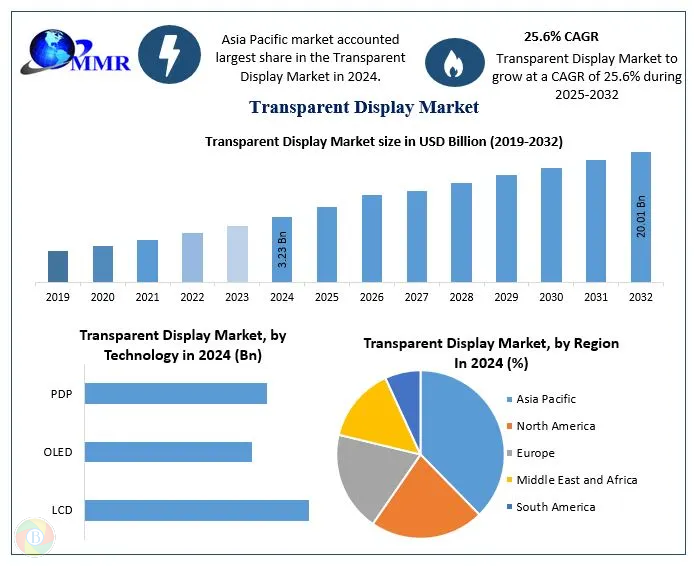Horticultural LED Lighting Market Size to Reach USD 2.41 Billion
Horticultural LED Lighting Market, valued at USD 977 million in 2024, is on a spectacular growth trajectory, projected to surge to USD 2,405 million by 2032. This robust expansion, representing a compound annual growth rate (CAGR) of 14.1%, is detailed in a comprehensive new report published by Semiconductor Insight. The study underscores the pivotal role of this advanced lighting technology in revolutionizing agriculture by enabling precise control over plant growth, maximizing yields, and ensuring year-round production regardless of external climatic conditions.
Horticultural LED lighting systems, designed to provide specific light spectra and intensities optimal for photosynthesis, are becoming fundamental tools for modern growers. Their energy efficiency and long operational life make them indispensable for optimizing resource utilization and enhancing operational profitability. The ability to tailor light wavelengths allows for the manipulation of plant characteristics such as flavor, aroma, color, and growth rate, creating unprecedented opportunities for the agriculture industry.
Controlled Environment Agriculture (CEA) Expansion: The Core Driver of Market Momentum
The report identifies the explosive growth of Controlled Environment Agriculture (CEA) as the paramount force propelling the horticultural LED lighting market forward. The transition from traditional field farming to sophisticated indoor and greenhouse cultivation is accelerating globally, driven by the need for food security and sustainable production practices.
"The accelerating adoption of indoor vertical farms and the technological modernization of commercial greenhouses are creating sustained, high-volume demand for advanced LED solutions," the report states. With global investments in agri-tech and urban farming initiatives escalating, the requirements for precise photobiological control are intensifying, making LED technology the preferred choice for professional growers seeking to minimize their environmental footprint while maximizing output.
Read Full Report: https://semiconductorinsight.com/report/horticultural-led-lighting-market/
Market Segmentation: High Power Systems and Commercial Greenhouses Dominate
The report provides a detailed segmentation analysis, offering a clear view of the market structure and key growth segments:
Segment Analysis:
By Type
• Low Power (≤300W)
• High Power (>300W)
• Others
By Application
• Commercial Greenhouse
• Indoor and Vertical Farming
• R&D
By Technology
• Full-Spectrum Lighting
• Targeted Spectrum Lighting
• Variable Spectrum Lighting
Download FREE Sample Report:
Horticultural LED Lighting Market - View in Detailed Research Report
Competitive Landscape: Key Players and Strategic Focus
The report profles key industry players, including:
• Signify (Philips Lighting) (Netherlands)
• Osram (Germany)
• General Electric (U.S.)
• Everlight Electronics (Taiwan)
• Hubbell Lighting (U.S.)
• Cree (U.S.)
• Gavita (Netherlands)
• Kessil (U.S.)
• Fionia Lighting (Denmark)
• Illumitex (U.S.)
• Lumigrow (U.S.)
• Valoya (Finland)
• Cidly (China)
• Heliospectra AB (Sweden)
• Ohmax Optoelectronic (China)
These companies are focusing on technological advancements, such as integrating smart controls and IoT for data-driven cultivation, and geographic expansion into high-growth regions to capitalize on emerging opportunities.
Emerging Opportunities in Urban Farming and Specialty Crops
Beyond the established drivers of greenhouse cultivation, the report outlines significant emerging opportunities. The proliferation of vertical farms in urban centers aims to supply fresh produce to metropolitan populations with minimal transportation. Furthermore, the cultivation of high-value medicinal plants and the legal cannabis industry in varios regions present new, high-margin growth avenues, demanding extremely precise spectral management.
Report Scope and Availability
The market research report offers a comprehensive analysis of the global and regional Horticultural LED Lighting markets from 2025-2032. It provides detailed segmentation, market size forecasts, competitive intelligence, technology trends, and an evaluation of key market dynamics.
For a detailed analysis of market drivers, restraints, opportunities, and the competitive strategies of key players, access the complete report.
Get Full Report Here:
Horticultural LED Lighting Market, Global Business Strategies 2025-2032 - View in Detailed Research Report
About Semiconductor Insight
Semiconductor Insight is a leading provider of market intelligence and strategic consulting for the global semiconductor and high-technology industries. Our in-depth reports and analysis offer actionable insights to help businesses navigate complex market dynamics, identify growth opportunities, and make informed decisions. We are committed to delivering high-quality, data-driven research to our clients worldwide.
Website: https://semiconductorinsight.com/
International: +91 8087 99 2013
LinkedIn: Follow Us
#HorticulturalLEDLightingMarket,
#HorticulturalLEDLightingGrowth,
#HorticulturalLEDLightingIndustry,
#HorticulturalLEDLightingTrends,
#HorticulturalLEDLightingForecast
Horticultural LED Lighting Market, valued at USD 977 million in 2024, is on a spectacular growth trajectory, projected to surge to USD 2,405 million by 2032. This robust expansion, representing a compound annual growth rate (CAGR) of 14.1%, is detailed in a comprehensive new report published by Semiconductor Insight. The study underscores the pivotal role of this advanced lighting technology in revolutionizing agriculture by enabling precise control over plant growth, maximizing yields, and ensuring year-round production regardless of external climatic conditions.
Horticultural LED lighting systems, designed to provide specific light spectra and intensities optimal for photosynthesis, are becoming fundamental tools for modern growers. Their energy efficiency and long operational life make them indispensable for optimizing resource utilization and enhancing operational profitability. The ability to tailor light wavelengths allows for the manipulation of plant characteristics such as flavor, aroma, color, and growth rate, creating unprecedented opportunities for the agriculture industry.
Controlled Environment Agriculture (CEA) Expansion: The Core Driver of Market Momentum
The report identifies the explosive growth of Controlled Environment Agriculture (CEA) as the paramount force propelling the horticultural LED lighting market forward. The transition from traditional field farming to sophisticated indoor and greenhouse cultivation is accelerating globally, driven by the need for food security and sustainable production practices.
"The accelerating adoption of indoor vertical farms and the technological modernization of commercial greenhouses are creating sustained, high-volume demand for advanced LED solutions," the report states. With global investments in agri-tech and urban farming initiatives escalating, the requirements for precise photobiological control are intensifying, making LED technology the preferred choice for professional growers seeking to minimize their environmental footprint while maximizing output.
Read Full Report: https://semiconductorinsight.com/report/horticultural-led-lighting-market/
Market Segmentation: High Power Systems and Commercial Greenhouses Dominate
The report provides a detailed segmentation analysis, offering a clear view of the market structure and key growth segments:
Segment Analysis:
By Type
• Low Power (≤300W)
• High Power (>300W)
• Others
By Application
• Commercial Greenhouse
• Indoor and Vertical Farming
• R&D
By Technology
• Full-Spectrum Lighting
• Targeted Spectrum Lighting
• Variable Spectrum Lighting
Download FREE Sample Report:
Horticultural LED Lighting Market - View in Detailed Research Report
Competitive Landscape: Key Players and Strategic Focus
The report profles key industry players, including:
• Signify (Philips Lighting) (Netherlands)
• Osram (Germany)
• General Electric (U.S.)
• Everlight Electronics (Taiwan)
• Hubbell Lighting (U.S.)
• Cree (U.S.)
• Gavita (Netherlands)
• Kessil (U.S.)
• Fionia Lighting (Denmark)
• Illumitex (U.S.)
• Lumigrow (U.S.)
• Valoya (Finland)
• Cidly (China)
• Heliospectra AB (Sweden)
• Ohmax Optoelectronic (China)
These companies are focusing on technological advancements, such as integrating smart controls and IoT for data-driven cultivation, and geographic expansion into high-growth regions to capitalize on emerging opportunities.
Emerging Opportunities in Urban Farming and Specialty Crops
Beyond the established drivers of greenhouse cultivation, the report outlines significant emerging opportunities. The proliferation of vertical farms in urban centers aims to supply fresh produce to metropolitan populations with minimal transportation. Furthermore, the cultivation of high-value medicinal plants and the legal cannabis industry in varios regions present new, high-margin growth avenues, demanding extremely precise spectral management.
Report Scope and Availability
The market research report offers a comprehensive analysis of the global and regional Horticultural LED Lighting markets from 2025-2032. It provides detailed segmentation, market size forecasts, competitive intelligence, technology trends, and an evaluation of key market dynamics.
For a detailed analysis of market drivers, restraints, opportunities, and the competitive strategies of key players, access the complete report.
Get Full Report Here:
Horticultural LED Lighting Market, Global Business Strategies 2025-2032 - View in Detailed Research Report
About Semiconductor Insight
Semiconductor Insight is a leading provider of market intelligence and strategic consulting for the global semiconductor and high-technology industries. Our in-depth reports and analysis offer actionable insights to help businesses navigate complex market dynamics, identify growth opportunities, and make informed decisions. We are committed to delivering high-quality, data-driven research to our clients worldwide.
Website: https://semiconductorinsight.com/
International: +91 8087 99 2013
LinkedIn: Follow Us
#HorticulturalLEDLightingMarket,
#HorticulturalLEDLightingGrowth,
#HorticulturalLEDLightingIndustry,
#HorticulturalLEDLightingTrends,
#HorticulturalLEDLightingForecast
Horticultural LED Lighting Market Size to Reach USD 2.41 Billion
Horticultural LED Lighting Market, valued at USD 977 million in 2024, is on a spectacular growth trajectory, projected to surge to USD 2,405 million by 2032. This robust expansion, representing a compound annual growth rate (CAGR) of 14.1%, is detailed in a comprehensive new report published by Semiconductor Insight. The study underscores the pivotal role of this advanced lighting technology in revolutionizing agriculture by enabling precise control over plant growth, maximizing yields, and ensuring year-round production regardless of external climatic conditions.
Horticultural LED lighting systems, designed to provide specific light spectra and intensities optimal for photosynthesis, are becoming fundamental tools for modern growers. Their energy efficiency and long operational life make them indispensable for optimizing resource utilization and enhancing operational profitability. The ability to tailor light wavelengths allows for the manipulation of plant characteristics such as flavor, aroma, color, and growth rate, creating unprecedented opportunities for the agriculture industry.
Controlled Environment Agriculture (CEA) Expansion: The Core Driver of Market Momentum
The report identifies the explosive growth of Controlled Environment Agriculture (CEA) as the paramount force propelling the horticultural LED lighting market forward. The transition from traditional field farming to sophisticated indoor and greenhouse cultivation is accelerating globally, driven by the need for food security and sustainable production practices.
"The accelerating adoption of indoor vertical farms and the technological modernization of commercial greenhouses are creating sustained, high-volume demand for advanced LED solutions," the report states. With global investments in agri-tech and urban farming initiatives escalating, the requirements for precise photobiological control are intensifying, making LED technology the preferred choice for professional growers seeking to minimize their environmental footprint while maximizing output.
Read Full Report: https://semiconductorinsight.com/report/horticultural-led-lighting-market/
Market Segmentation: High Power Systems and Commercial Greenhouses Dominate
The report provides a detailed segmentation analysis, offering a clear view of the market structure and key growth segments:
Segment Analysis:
By Type
• Low Power (≤300W)
• High Power (>300W)
• Others
By Application
• Commercial Greenhouse
• Indoor and Vertical Farming
• R&D
By Technology
• Full-Spectrum Lighting
• Targeted Spectrum Lighting
• Variable Spectrum Lighting
Download FREE Sample Report:
Horticultural LED Lighting Market - View in Detailed Research Report
Competitive Landscape: Key Players and Strategic Focus
The report profles key industry players, including:
• Signify (Philips Lighting) (Netherlands)
• Osram (Germany)
• General Electric (U.S.)
• Everlight Electronics (Taiwan)
• Hubbell Lighting (U.S.)
• Cree (U.S.)
• Gavita (Netherlands)
• Kessil (U.S.)
• Fionia Lighting (Denmark)
• Illumitex (U.S.)
• Lumigrow (U.S.)
• Valoya (Finland)
• Cidly (China)
• Heliospectra AB (Sweden)
• Ohmax Optoelectronic (China)
These companies are focusing on technological advancements, such as integrating smart controls and IoT for data-driven cultivation, and geographic expansion into high-growth regions to capitalize on emerging opportunities.
Emerging Opportunities in Urban Farming and Specialty Crops
Beyond the established drivers of greenhouse cultivation, the report outlines significant emerging opportunities. The proliferation of vertical farms in urban centers aims to supply fresh produce to metropolitan populations with minimal transportation. Furthermore, the cultivation of high-value medicinal plants and the legal cannabis industry in varios regions present new, high-margin growth avenues, demanding extremely precise spectral management.
Report Scope and Availability
The market research report offers a comprehensive analysis of the global and regional Horticultural LED Lighting markets from 2025-2032. It provides detailed segmentation, market size forecasts, competitive intelligence, technology trends, and an evaluation of key market dynamics.
For a detailed analysis of market drivers, restraints, opportunities, and the competitive strategies of key players, access the complete report.
Get Full Report Here:
Horticultural LED Lighting Market, Global Business Strategies 2025-2032 - View in Detailed Research Report
About Semiconductor Insight
Semiconductor Insight is a leading provider of market intelligence and strategic consulting for the global semiconductor and high-technology industries. Our in-depth reports and analysis offer actionable insights to help businesses navigate complex market dynamics, identify growth opportunities, and make informed decisions. We are committed to delivering high-quality, data-driven research to our clients worldwide.
🌐 Website: https://semiconductorinsight.com/
📞 International: +91 8087 99 2013
🔗 LinkedIn: Follow Us
#HorticulturalLEDLightingMarket,
#HorticulturalLEDLightingGrowth,
#HorticulturalLEDLightingIndustry,
#HorticulturalLEDLightingTrends,
#HorticulturalLEDLightingForecast
·3K Vue
·0 Avis





